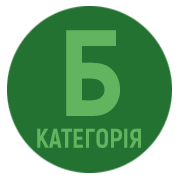POTATO PLANTING DATES AND SUSTAINABLE AGRICULTURE: ECOLOGICAL AND RESOURCE ASPECTS (REVIEW)
DOI:
https://doi.org/10.32782/naturaljournal.13.2025.23Keywords:
potato, planting dates, yield, biologized technologies, agrotechnics, climate changeAbstract
Modern Ukrainian agriculture faces unprecedented challenges caused by the full-scale invasion and a significant reduction in available arable land. Under these circumstances, the optimization of every agrotechnical measure becomes acutely important to ensure the country’s food security and increase production efficiency. This review article focuses on analyzing the impact of potato (Solanum tuberosum L.) planting dates and other elements of cultivation technology on its productivity and quality, synthesizing data from global and Ukrainian scientific research. The study is based on a systematic analysis of current scientific literature from leading databases. The search was conducted using keywords such as “potato”, “planting dates”, “planting optimization”, “potato yield”, “tuber quality”, “climate change” and “potato agrotechnology” with particular attention paid to Ukrainian research. It has been found that planting dates are a critically important factor directly influencing the physiological development of plants, tuber formation, and final yield. Optimal planting times vary significantly depending on the region and varietal characteristics. For example, in India, optimal planting is in October, in Bangladesh – in December, while in North China, later planting of mid- or late-maturing cultivars is recommended, depending on the geographical axis. In Ukraine, particularly in Polissia, the optimal period is considered to be the second or third decade of April, and for summer planting in the South – the third decade of June. Early planting has also shown its effectiveness in Ethiopia for increasing average tuber weight and yield. However, the review emphasizes that planting dates are not the sole decisive factor.A comprehensive approach is necessary to achieve high and stable yields. Specifically, the effectiveness of biologized technologies has been proven. The use of cover crops in combination with biodestructors significantly increases the biodiversity of the soil's microbial complex and the number of beneficial microorganisms, contributing to improved soil processes and pathogen suppression. Such biologizedsystems, even with slightly lower overall yields compared to standard ones, can provide significantly higher conditional net profit and profitability due to the higher price of organic products and minimized chemical costs. Additionally, foliar fertilization with microelements and optimization of mineral nutrition in combination with specific planting schemes play an important role. Studies show that a double foliar application of microelements against a background of cover crops and localized mineral fertilizer application improves the growth, development, and yield of seed potatoes. Optimized mineral fertilizer doses in combination with foliar fertilization and a specific planting scheme contribute to the maximum accumulation of dry matter and starch, especially in early-maturing cultivars. The increase in potato yield in Ukraine at the beginning of the 21st century is largely due to technological improvements, the introduction of new adapted varieties, and more effective pest and disease control, rather than solely favorable climate changes. Conversely, warming leads to increased drought and periodic waterlogging of the soil, which poses a challenge to yield stability. Thus, to ensure food security and enhance potato cultivation efficiency in Ukraine, especially under conditions of limited resources and climate change, the implementation of an integrated approach is necessary. This approach should combine scientifically substantiated planting dates, the application of biological preparations, adapted nutrition systems, and the use of new, stress-tolerant cultivars.
References
Балашова Г.С., Нетіс В.І, Юзюк С.М., Котов Б.С., Юзюк О.О. Ефективність біологізованої технології вирощування картоплі за краплинного зрошення в умовах Півдня України. Вісник аграрної науки. 2021. Т. 99. № 5. С. 60–64. https://doi.org/10.31073/agrovisnyk202105-08.
Вожегова Р.А., Балашова Г.С., Бояркіна Л.В., Сахацький Г.І. Вплив різних строків літнього садіння свіжозібраними бульбами на водоспоживання картоплі в умовах зрошення Півдня України. Аграрні інновації. 2021. № 5. С. 118–122. https://doi.org/10.32848/agrar. innov.2021.5.19.
Коваль А.В., Ільчук І.В., Гадзало А.Я., Мартинюк І.В. Біохімічна характеристика сортів картоплі за вирощування в умовах Західного Лісостепу України. Передгірне та гірське землеробство і тваринництво. 2022. Вип. 71(1). С. 110–122. https://doi.org/10.32636/01308521.2022-(71)-1-7.
Марценюк Я.Ю. Динаміка формування продуктивності картоплі залежно від строків садіння. Аграрні інновації. 2024. № 23. С. 112–117. https://doi.org/10.32848/agrar.innov.2024.23.16.
Ahmed B., Sultana M., Chowdhury M., Akhter S., Alam M. Growth and Yield Performance of Potato Varieties Under Different Planting Dates. Bangladesh Agronomy Journal. 2017. Vol. 20 № 1. P. 25–29. https://doi.org/10.3329/baj.v20i1.34878.
Arab H.R., Afshari H., Daliri M.S., Laei G., Toudar S.R. The Effect of Planting Date, Depth and Density on Yield and Yield Components of Potato in Shahrood (Iran). Journal of Research in Agricultural Science. 2011. Vol. 7. № 2. P. 141–149.
Begum F., Kundu B., Hossain M. Physiological analysis of growth and yield of potato in relation to planting date. Journal of Bangladesh Academy of Sciences. 2015. Vol. 39. № 1. P. 45–51. https://doi.org/10.3329/jbas.v39i1.23657.
Bondus R., Kharchenko Yu., Furdyga M., Mishchenko L., Podhaietskyi A., Hordienko V., Hordienko O., Koval V. Polymorphism of the available potato gene pool for resistance to abiotic and biotic factors of the environment and its practical use. The Journal of V.N. Karazin Kharkiv National University. Series «Biology» . 2022. Vol. 38. P. 4–13. https://doi.org/10.26565/2075-5457-2022-38-1.
Datsko O., Melnyk O., Kovalenko I., Butenko A., Zakharchenko E., Ilchenko V., Onychko V., Solokha M. Estimation of the content of trace metals in Ukrainian military-affected soils. Notulae Botanicae Horti Agrobotanici Cluj-Napoca. 2025a. Vol. 53. № 1. P. 14328. https://doi.org/10.15835/nbha53114328.
Datsko O., Kovalenko N., Hotvianska A., Sologub I., Bondarenko O., Hulenko O., Dubovyk I., Sakhoshko M., Davydenko G., Radchenko M., Pidluzhny E. Regenerative farming as a tool to combat climate change. Modern Phytomorphology. 2025b. Vol. 19. P. 117–120.
Khomenko T.O., Tonkha O.L. Оцінка біологічної активності дерново-підзолистого ґрунту за застосування органічних технологій вирощування картоплі. Naukovì Dopovìdì Nacìonal’nogo Unìversitetu Bìoresursiv ì Prirodokoristuvannâ Ukraïni. 2024. Vol. 1. № 107. https://doi.org/10.31548/dopovidi.1(107).2024.005.
Li Y., Wang J., Tang J., Wang E., Pan Z., Pan X., Hu Q. Optimum planting date and cultivar maturity to optimize potato yield and yield stability in North China. Field Crops Research. 2021. Vol. 269. P. 108179. https://doi.org/10.1016/j.fcr.2021.108179.
Polovyi A., Bozhko L., Barsukova E. The influence of weather conditions on the formation of potato yields in the Western Polessie. Ecological Sciences. 2021. Vol. 36. № 3. P. 104–109. https://doi.org/10.32846/2306-9716/2021.eco.3-36.16.
Thongam B., Kadam A.S., Singh A.A., Singh Y.H. Influence of planting dates on growth and yield of potato (Solanum tuberosum L.). Journal of Pharmacognosy and Phytochemistry. 2017. Vol. 6. № 6. P. 1243–1246.
Vdovenko S., Poltoretskyi S., Polishchuk M., Verheles P. Optimization of the feeding system of seed potatoes growing in the conditions of the forest steppe of the right bank. Agriculture and Forestry. 2023. Vol. 1. P. 62–73. https://doi.org/10.37128/2707-5826-2023-1-5.
Yang L., Jing W., Jianzhao T., Mingxia H., Huiqing B., Na W., Fuwei H. Coupling impacts of planting date and cultivar on potato yield. Chinese Journal of Eco-Agriculture. 2019. Vol. 27. № 2. P. 296–304. https://doi.org/10.13930/j.cnki.cjea.180707.







